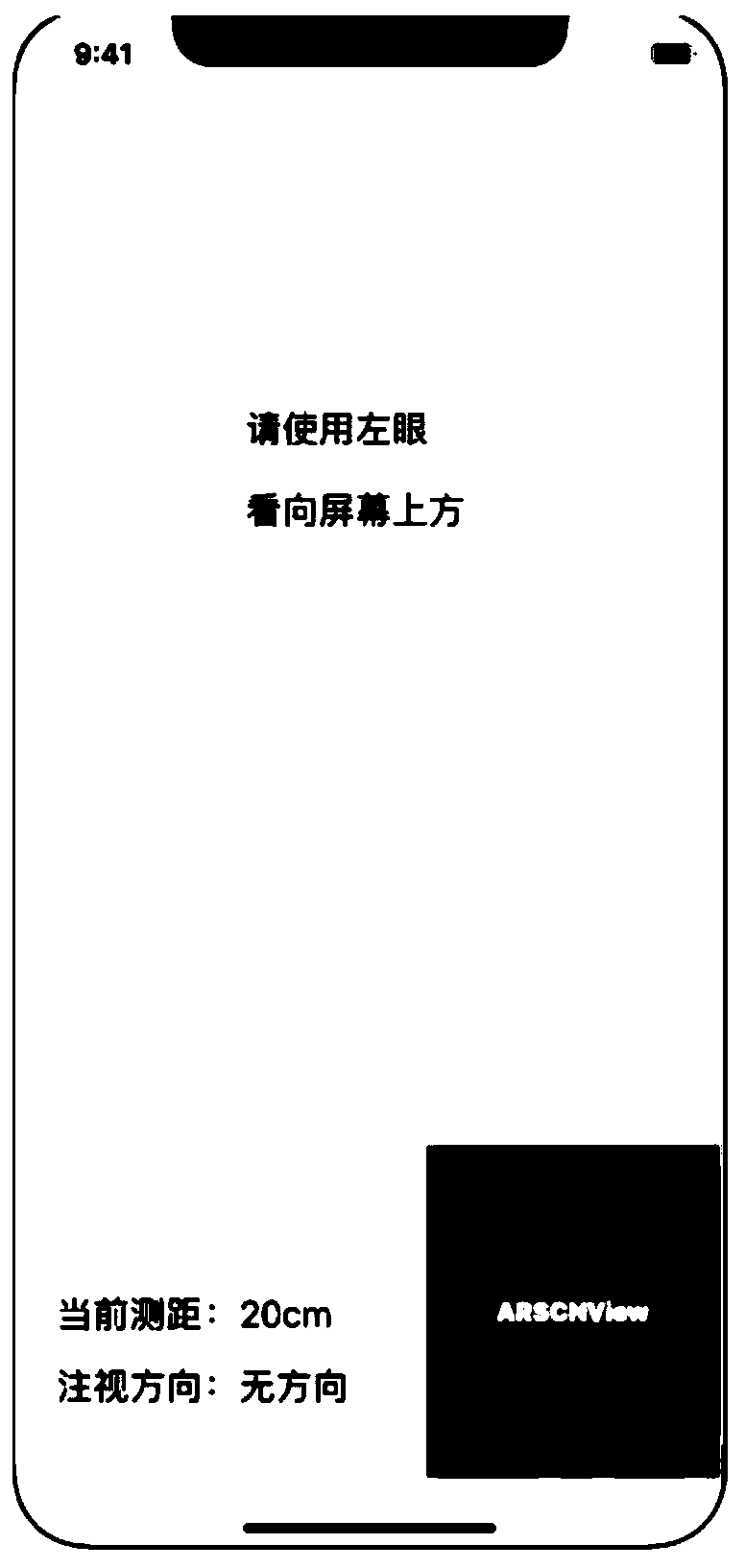Visual function self-testing method
A technology of visual function and self-test, applied in the field of visual function self-test, it can solve the problems of inability to detect, high labor cost, difficult to describe, etc., and achieve the effect of fast speed and accurate test results.
- Summary
- Abstract
- Description
- Claims
- Application Information
AI Technical Summary
Problems solved by technology
Method used
Image
Examples
Embodiment 1
[0038] Embodiment 1 visual acuity test
[0039] Step 1. Input the information of the person to be tested
[0040] figure 1 As shown, the information filling interface of S1.
[0041] This interface contains input boxes for name, age, and contact information. After the subject enters the information in the correct format, the information of the subject will be saved and jump to the distance measurement debugging interface.
[0042] Step 2. Distance test and gaze direction test
[0043] Distance test:
[0044] The actual distance is obtained by combining the interfaces in the two frameworks of SceneKit and ARKit.
[0045] SceneKit will obtain the user's facial information based on the iPhone X's front camera, construct a scene and establish a coordinate system based on the information obtained by the camera in real time. The world coordinate system established by SceneKit is a three-dimensional coordinate system with the front camera of the iPhone X as the origin, the direc...
Embodiment 2
[0076] Embodiment 2 contrast sensitivity test
[0077] The test steps are the same as the eyesight test steps of Example 1, but the test content adopted is different.
[0078] 1. Test environment and visual stimulus design
[0079] 1) Test environment
[0080] The user places the mobile phone horizontally, and in a dark room environment, simulates a visual target size equivalent to 50cm for testing (the simulation method adopted is the same as that of Embodiment 1). Test the right eye first, then the left eye. The non-test eye is completely covered with a goggle or palm.
[0081] 2) Visual stimulation design
[0082] Visual stimuli consisted of vertical or horizontal gratings (Gabor). On different trials, the grating's spatial frequency and contrast values were automatically generated based on the test results of the subject's previous trials.
[0083] 2. Test process and threshold setting
[0084] 1) Practice and familiarize yourself with the test process: the subjec...
Embodiment 3
[0086] Embodiment 3 Stereo vision test
[0087] The test steps are the same as the eyesight test steps of Example 1, but the test content adopted is different.
[0088] 1. Test environment and visual stimulus design
[0089] 1) Environmental requirements
[0090] The user places the mobile phone horizontally, and uses the red and green three-dimensional lenses to simulate the size of the visual mark equivalent to 50cm under natural light for testing (the simulation method adopted is the same as that of Example 1).
[0091] 2) Visual stimulation design
[0092] The stimuli were two static random spots in the shape of disks placed side by side on a dark background, and the edges of the disks were Gaussian blurred to avoid edge effects causing parallax. Each disk contains randomly positioned red and green dots with a certain offset between them to create a sense of depth, as in Figure 6 .
[0093] Using the blending function provided by OpenGL ES, the overlapping red and gr...
PUM
 Login to View More
Login to View More Abstract
Description
Claims
Application Information
 Login to View More
Login to View More - R&D
- Intellectual Property
- Life Sciences
- Materials
- Tech Scout
- Unparalleled Data Quality
- Higher Quality Content
- 60% Fewer Hallucinations
Browse by: Latest US Patents, China's latest patents, Technical Efficacy Thesaurus, Application Domain, Technology Topic, Popular Technical Reports.
© 2025 PatSnap. All rights reserved.Legal|Privacy policy|Modern Slavery Act Transparency Statement|Sitemap|About US| Contact US: help@patsnap.com



